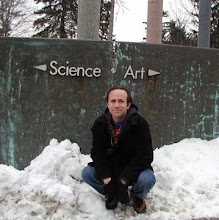In the midst of the initial batch of headlines coming out of Japan, I found myself viscerally compelled to respond in some way. Perhaps on the second or third night after the tsunami hit, I had jotted down some notes about an initial idea for this piece, before going to sleep. I couldn't sleep, and got up to put sketches down - that ultimately are pretty much what I ended up doing in the final piece. The piece kept changing throughout the process before returning back to nearly what I'd come up with that first night. There are no neat answers in this situation and as further horrors stack up, I find myself coming back to that last line over and over again "hold close..." - Nick
Big Goals, Little Promises
17 years ago








